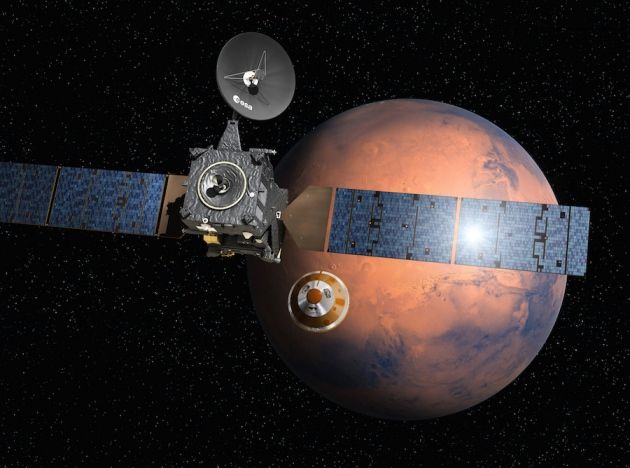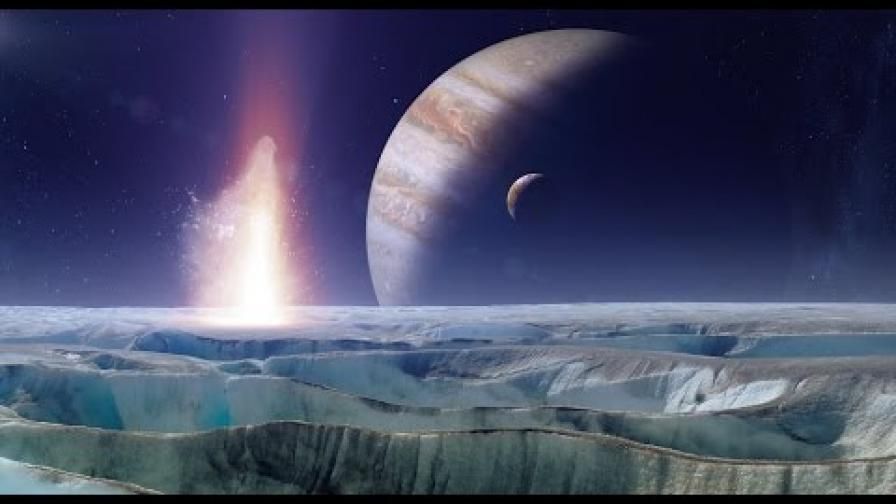Beneath the Surface is Best Place to Find Life on Mars
Article by Sean Martin July 28, 2020 (express.co.uk)
• The European Space Agency (ESA) and Russia’s Roscosmos’ ExoMars mission to Mars that was scheduled for launch this year has been postponed until 2022 due to the lock-downs imposed by the coronavirus outbreak. When it does launch in 2022, the ExoMars’ ‘Rosalind Franklin Rover’ will be attached with a subsurface drill, to look beneath the surface for signs of life.
• Astrophysicist and research scientist Dimitra Atri at the Center for Space Science at NYU Abu Dhabi believes that subsurface conditions on the Red Planet could be the best for any microorganisms, because there are still traces of water – a main ingredients for life – beneath the surface. Also, any life beneath the surface will be protected from deadly solar radiation.
• In addition, the launch was delayed due to issues with some of the electronics in the robot, and a hardware concern for the solar panels. With the borders closed due to the pandemic, neither the engineers nor the parts to correct these issues are readily available. Professor of planetary and space science at the Open University Monica Grady says, “Each of the hardware issues could be solved, as could problems with software – but in combination, there was too great a risk that the time remaining before the launch was too short to ensure * full and thorough final testing.”
• “The final staging place before moving to the launch site is Turin, in northern Italy, where illness from coronavirus has practically closed the country and brought movement across its borders to a halt,” noted Grady. “Engineers from the UK, France, Russia and the US (at the very least) will be needed alongside those in Italy for the final testing.”
• [Editor’s Note] The place to look for life on Mars is indeed under the planet’s surface. Mars is teeming with a variety of subsurface civilizations, from indigenous intelligent reptilian and raptor species, to indigenous humanoids hiding in the crevasses, to secret space program bases belonging to the Nazi German/Draco Reptilians, industrial colonies belonging to the Interplanetary Corporate Conglomerate, and the ICC’s mercenary military divisions: the Mars Defense Force and the Interplanetary Defense and Reaction Forces.


The European Space Agency (ESA) and Russia’s Roscosmos is set to up the ante in the search for life on Mars when it launches the ExoMars rover to the Red Planet in 2022. The machine will be attached with a subsurface drill which will be able to look beneath the surface for signs of life. By doing so, it will become the first rover to look for signs of life beneath the surface.
Some experts believe this could be the best hope of finding alien life.
Astrophysicist and research scientist Dimitra Atri at the Center for Space Science at NYU Abu Dhabi has conducted research, and found that subsurface conditions of the Red Planet could be the best for any microorganisms, according to the research published in the journal Scientificace to loo.

This is because beneath the surface, there are still traces of water – one of the main ingredients for life.
On top of that, any life beneath the surface will be protected from deadly solar radiation – protection which is lacking on the surface due to the Red Planet’s lack of atmosphere.
Mr Atri said: “It is exciting to contemplate that life could survive in such a harsh environment, as few as two meters below the surface of Mars.
“When the Rosalind Franklin rover on board the ExoMars mission (ESA and Roscosmos), equipped with a subsurface drill, is launched in 2022, it will be well-suited to detect extant microbial life and hopefully provide some important insights.”
ExoMars was set to be launched this year, but the coronavirus outbreak put a halt to that.
FAIR USE NOTICE: This page contains copyrighted material the use of which has not been specifically authorized by the copyright owner. ExoNews.org distributes this material for the purpose of news reporting, educational research, comment and criticism, constituting Fair Use under 17 U.S.C § 107. Please contact the Editor at ExoNews with any copyright issue.


